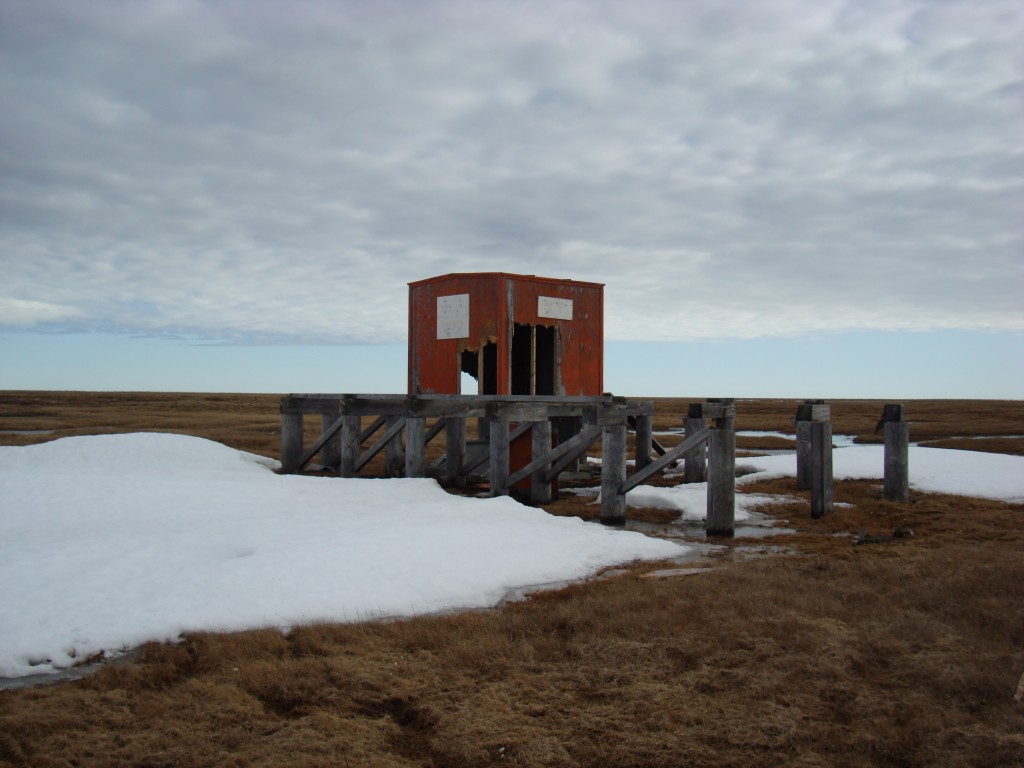
A three ring binder the size of a toaster oven sits on a small table in Cathy Foerster’s office in downtown Anchorage. The chair of the Alaska Oil and Gas Conservation Commission wants easy access to information on each of the Bureau of Land Managment’s so-called legacy wells. There are 126 of them:
“What the notebook contains, for every well it contains a picture of what the surface looks like. And most of them are not very pretty.”
Foerster is from Texas, a fact she is quick to point out. And in Texas, orphan wells- where companies drill for oil, go bankrupt and then leave the well without cleaning up- are a big problem. So when she first joined the commission in 2005, she wondered if there were many orphan wells in Alaska.
“I was quickly able to determine that the only problem we have in this state, other than the three or four wells that don’t have an operator we can go back on, the only problem in this state is the one created by the federal government.”
That problem is mostly in the National Petroleum Reserve- Alaska, which is managed by the Bureau of Land Management. The exploratory wells were drilled by federal agencies from 1944 to 1982 to assess the oil and gas potential in the area. Alaska is the only state where federal legacy wells exist. Most of the wells have been left untouched for decades. One near Barrow is nicknamed the “whistling well” because it still occasionally releases gas. And Foerster says even the surface of many of the drill sites are an environmental mess:
“One well site has hundreds of drums, barrels that were left at one time filled with something, drilling mud, chemicals, who knows what. But all of those hundreds of drums have corroded and are empty, and whatever was there has leached into the tundra, and the drums are still out there rusting away.”
In seven years since Foerster first approached BLM about the problem, the two agencies haven’t even come to terms on which wells need acute attention, and which ones can be left alone. She says it has been difficult to get basic information from BLM on the status of the wells. Foerster was hopeful a U-S Senate Hearing on the issue this July would speed up the process. But that hasn’t happened.
“The attitude was, they’re out of sight, out of mind. Nobody knows. Nobody cares. They’re expensive to clean up, so we’re not going to do it.”
But the BLM is working to address the problem wells, although the pace of work is slow. Since 2004, the agency has cleaned up six of the highest priority wells for $60 million dollars. The state has questions about whether the work was completed to industry standards.
Ted Murphy is the associate state director of BLM. He says the state is exaggerating the environmental threat the wells pose:
“Honestly I think there’s been some misrepresentation on the status of the wells.”
Murphy acknowledges many of the wells look bad. They have an “optics problem,” as he puts it. But he says:
“It’s not a big environmental risk.”
Murphy says BLM is monitoring the wells to make sure they do not deteriorate to the point where they do become an environmental risk. And this month, the agency is planning to release a strategy for properly plugging and abandoning the remaining legacy wells. The agency hopes to address 13 wells in the next four years, if they can find funding:
“The BLM and the Department of Interior are taking this very seriously. And We’re also moving with a pragmatic approach to the completion of this.”
When the Interior Department makes NPR-A available for oil leasing, it can require companies clean up the legacy wells as a condition of the leases. But under the proposed plan for developing NPR-A, only about a quarter of the wells are on land available for leasing.
Foerster was infuriated when Interior Secretary Ken Salazar, who likes wearing cowboy hats, announced that so much of the reserve would be set aside for wilderness protection:
“Excuse me, if you’re going to get on your high horse with your pretty hat and say that you’ve got to protect this iconic piece of wilderness, then you need to clean up the messes you’re responsible for first.”
At the rate the BLM is working, Foerster is not optimistic those legacy well “messes” will be cleaned up any time soon. She suspects that hefty three ring binder will be sitting on her office table as long as she is commissioner.
Annie Feidt is the broadcast managing editor at Alaska Public Media. Reach her at afeidt@alaskapublic.org. Read more about Annie here.





